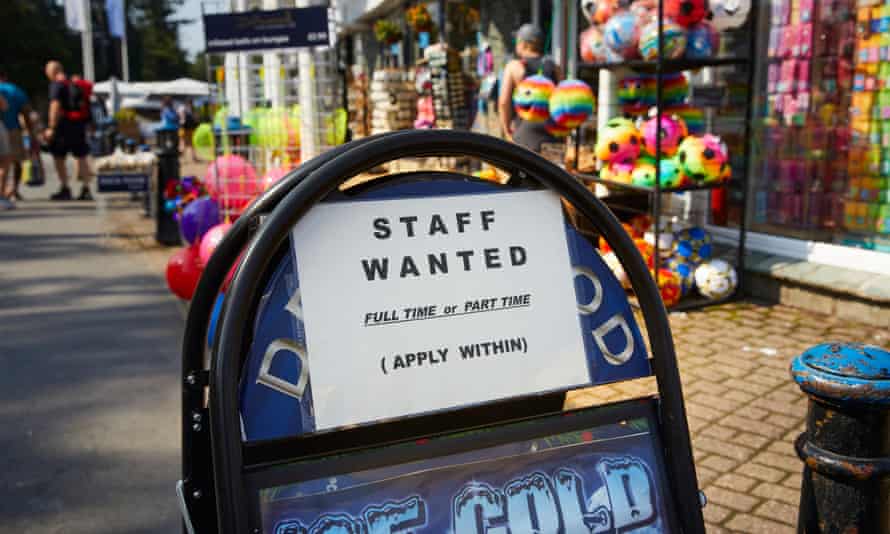Covid
Johnson detailed what he meant by “getting the big calls right” in a Commons speech on 19 January. He listed the decision to focus on the booster campaign in December, not opting to use the European Medicines Agency for vaccine procurement, and investing early in lateral flow tests and “cutting-edge drugs”. He also claimed that the UK had the “fastest booster campaign in Europe” and was “first to emerge from the Omicron wave”.
He did not refer to calls which were arguably bigger: the decision to prioritise hospitals instead of care homes in March 2020, the decision not to lock down in September 2020, the failure to procure enough PPE, and the decision to largely abandon public health measures such as contact tracing in March 2020. And other issues remain to be resolved – the NHS and the social care sector have at least 200,000 vacancies between them.
Up to 20,000 people could have died because of the original decision to not lock down in March 2020, according to modelling by Prof Neil Ferguson at Imperial College London. During the second wave, Johnson prioritised Christmas and did not order a lockdown until 6 January, when almost 32,000 people were in hospital and more than 4,000 were being admitted every day. More than 80,000 people died within 28 days of a positive test between 1 October 2020 and 28 February 2021.
When Johnson made his claims, the UK had delivered 53.99 boosters per 100 people – behind Iceland, Denmark and Israel, while Belgium overtook the UK two days later, according to Our World In Data. Independent fact-checker Full Fact UK said the PM seemed to define this as “reaching more than half our population before any other European country”, which was only accurate if Iceland and Denmark were not counted.
With the BA.2 version of Omicron apparently outcompeting the original BA.1 sublineage, and nearly 5% of people in England testing positive for Covid, according to the Office for National Statistics, it’s not clear that the UK has yet emerged from the Omicron wave.
Creating the vaccine taskforce instead of using the EMA, and the early authorisation by the Medicines and Healthcare products Regulatory Agency, meant that the UK had given a first dose to about 30% of the population by 1 March, compared with about 5% for France, Italy and Germany, according to Our World in Data. But the UK has proportionately fewer people who have taken up the vaccine than Portugal, Denmark, Italy, Ireland, France, Norway, Belgium, the Netherlands, and Finland.
James Tapper

Test and trace
The prime minister promised to create a world-beating testing programme near the start of the pandemic, and in his 19 January speech he appears to focus on the size of the programme, referring to England’s NHS Test and Trace scheme as “the largest in Europe”. The UK has performed substantially more tests than the largest four other countries in Europe. The latest figures show the UK had done 424.89m tests by 20 January, compared with 223.19m in France, 160m in Italy, about 99m in Germany and 79.8m in Spain.
On the world stage, however, the UK lags behind 768m in the US and 709m in India. Proportionally, the UK is now doing 22.07 tests per 1,000 people – fewer than Denmark’s 34, Portugal’s 31 and Greece’s 22.75. And Denmark has performed far more tests per person, relative to population size, since the pandemic began.
However, the purpose of testing and tracing is to be able to identify people who are likely to pass the virus on to others, and for them to isolate till they are no longer infectious. Its ultimate intention is to reduce deaths and serious illness.
By this measure, the UK has done worse than some countries – there have been about 217 excess deaths per 100,000 here compared with 135 per 100,000 in Germany – but better than others such as the US, which has had about 314 per 100,000.
James Tapper
Brexit
Johnson can claim to have “got Brexit done” by having signed a withdrawal agreement on 24 January 2020, making Brexit a legal reality. But disentangling the UK from the EU is far from finished and is proving anything but simple. Foreign secretary Liz Truss is still negotiating with Brussels over the Northern Ireland protocol.
Trade between the UK and EU has been hit by new rules and regulations, many of which have been delayed and some of which still have not come into force because of fears of the extra delays they will cause.

The UK is still pushing to retain links to key EU projects of economic benefit, such as the Horizon Europe research fund and the Copernicus Earth observation programme, but the EU is no pushover in negotiations with a state that has chosen to leave.
Global Britain has not materialised in the way the Brexiters promised. And there is little sign that the Biden administration wants to do a trade deal with the UK that was supposed to be the cherry on the post-single-market cake, so limited new deals with Australia and New Zealand are all Johnson has to show for his efforts so far.
What is frustrating even ardent pro-Brexiters is the lack of a Brexit plan. Joël Reland, a researcher for the UK in a Changing Europe thinktank, says: “The government seems to lack a clear idea of what it wants divergence from EU rules to mean. Freedom to remake EU rules has long been a dream of many in the Conservative party, but now that freedom has been won, there appears to be an as yet unreconciled debate over how best to make use of it.”
Toby Helm
The economy
Britain’s economy suffered one of the biggest downturns of any major economy during the pandemic. The first lockdown in 2020 brought a drop in national income, or GDP, of almost 20%. This was the biggest economic contraction in 300 years and can be blamed on Britain’s lack of preparation after a decade of austerity and a feeble initial response to the crisis.
In the second half of 2020, Boris Johnson and chancellor Rishi Sunak were quick to boast about a 17.4% quarter-on-quarter increase in GDP while ignoring the extent of the initial slump.
In recent weeks, Johnson has argued that the UK remains the fastest-growing economy, but only by focusing on a particular annual figure. A measure of GDP from the fourth quarter of 2020 to the third quarter of 2021 gives a figure of 6.8% growth for the UK, compared with 4.9% in the US and 3.3% and 2.6% in France and Germany respectively. Following the same selective process Johnson used in 2020, this growth rate measures the strong recovery last summer against the low point during the second and third lockdowns.
A comparison of the G7 rankings based on the most recent quarterly figures puts the UK in sixth, above only Japan. The US economy was already 1.4% larger than its pre-pandemic size in the third quarter of 2021, while the UK was 1.5% smaller.
Phillip Inman
Employment
The prime minister recently boasted that employment in Britain stands at record levels. To support his claim he used figures that show the number of payrolled workers increased to 29.5 million, up more than 400,000 on the previous year.
Tony Wilson, head of the Institute for Employment Studies thinktank, said it was frustrating to hear Johnson quote selectively from labour market figures, especially when the data was experimental and suffered revisions of 100,000 or more. More importantly, the data ignores a sharp decline in the numbers of the self-employed and those who have quit the labour market.

“In all there are now 1.1 million fewer people in the labour force than we would have expected to see based on pre-crisis trends, and older people account for three-fifths of this participation gap,” said Wilson.
Unemployment is a good news story. It has fallen to 4.1% – 0.1 percentage points above pre-pandemic levels. Yet this reduction mostly reflects people leaving the labour market. Vacancies remain at a record level of 1.1 million.
Phillip Inman
Stay connected with us on social media platform for instant update click here to join our Twitter, & Facebook
We are now on Telegram. Click here to join our channel (@TechiUpdate) and stay updated with the latest Technology headlines.
For all the latest Covid-19 News Click Here
